Being male and somewhat young, it’s kind of daunting writing about the feminism that’s rising in this crucial moment in time, a reaction against the reactionary political waves in America and beyond. Fashion, thank god, is rich on incredible female writers much better equipped to comment. They also happen to be some of the most colorful characters you’ll ever meet. The women easily outnumber the men in the seasonal traveling show circus, and there’s no question who is in charge here. However many male designers may inhabit fashion, this industry is ruled by women, and as a young man you can only count yourself lucky to be so fortunate as to grow up around so much female energy in this arena, this City of Women.

The Fellini film from 1980 became the inspiration for Prada’s fall/winter 17 show, the designer said backstage. Following last month’s men’s show where she called for a “more human, more simple, more real” approach to life in these times of upheaval, “with the women’s, of course, after what happened,” she reflected after her women’s show hinting at Trump’s victory, there were certain things she couldn’t ignore.
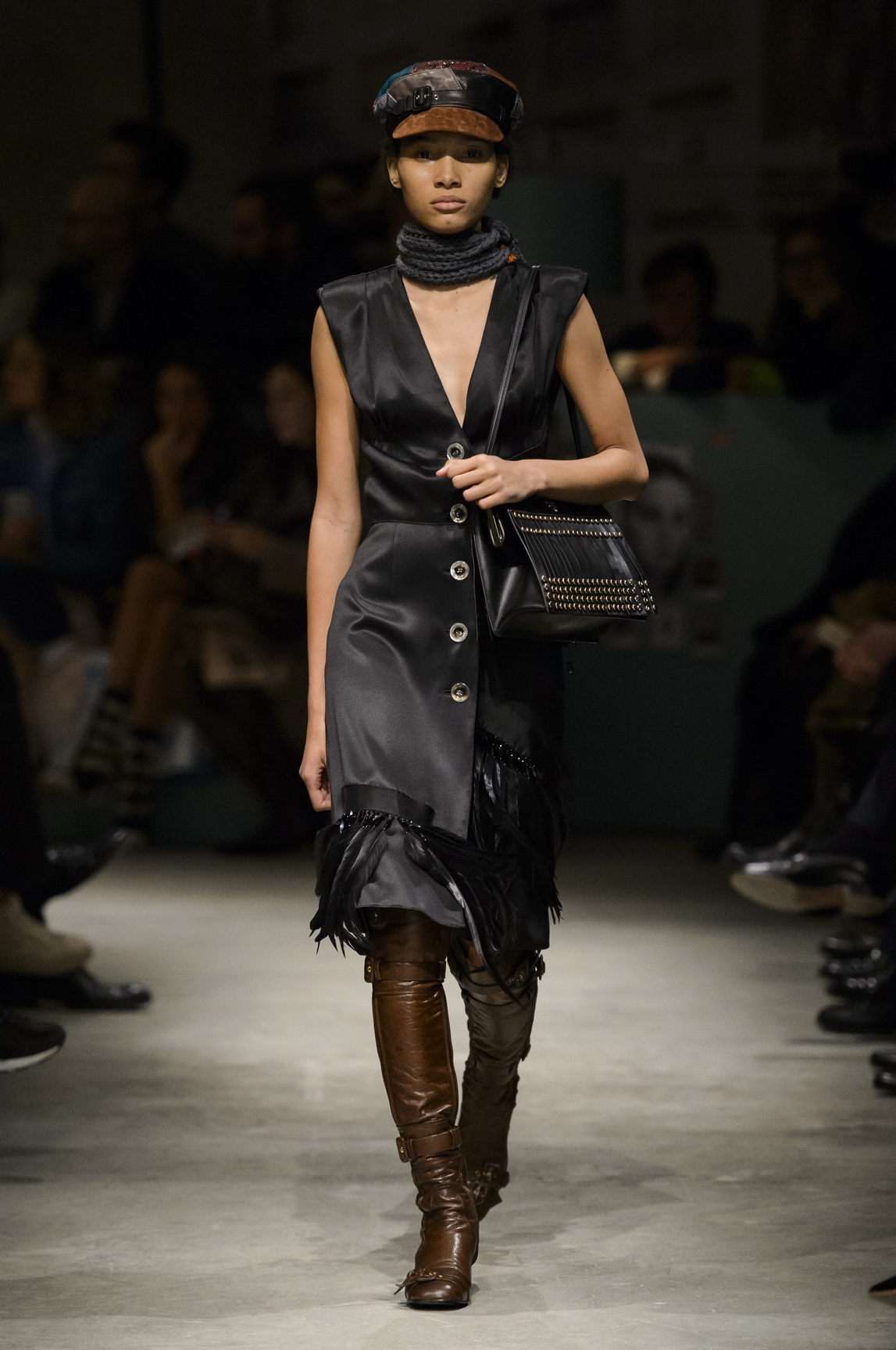
Prada’s thought process was uncharacteristically uncomplicated: flamboyant knitwear as a “symbol of the woman at home; of feminism”, prints by the 70s feminist illustrator Robert McGinnis of retro femmes fatales she referred to as “beautiful but also killers,” and a general vein of sensory, sensual, seductive exuberance defined by a luxuriance of trimmings. “My point is seduction,” Prada said. “How seduction is necessary.” She was referring to the age-old feminist struggle: “women want to appeal, want to be beautiful, but how, if you are intelligent?”
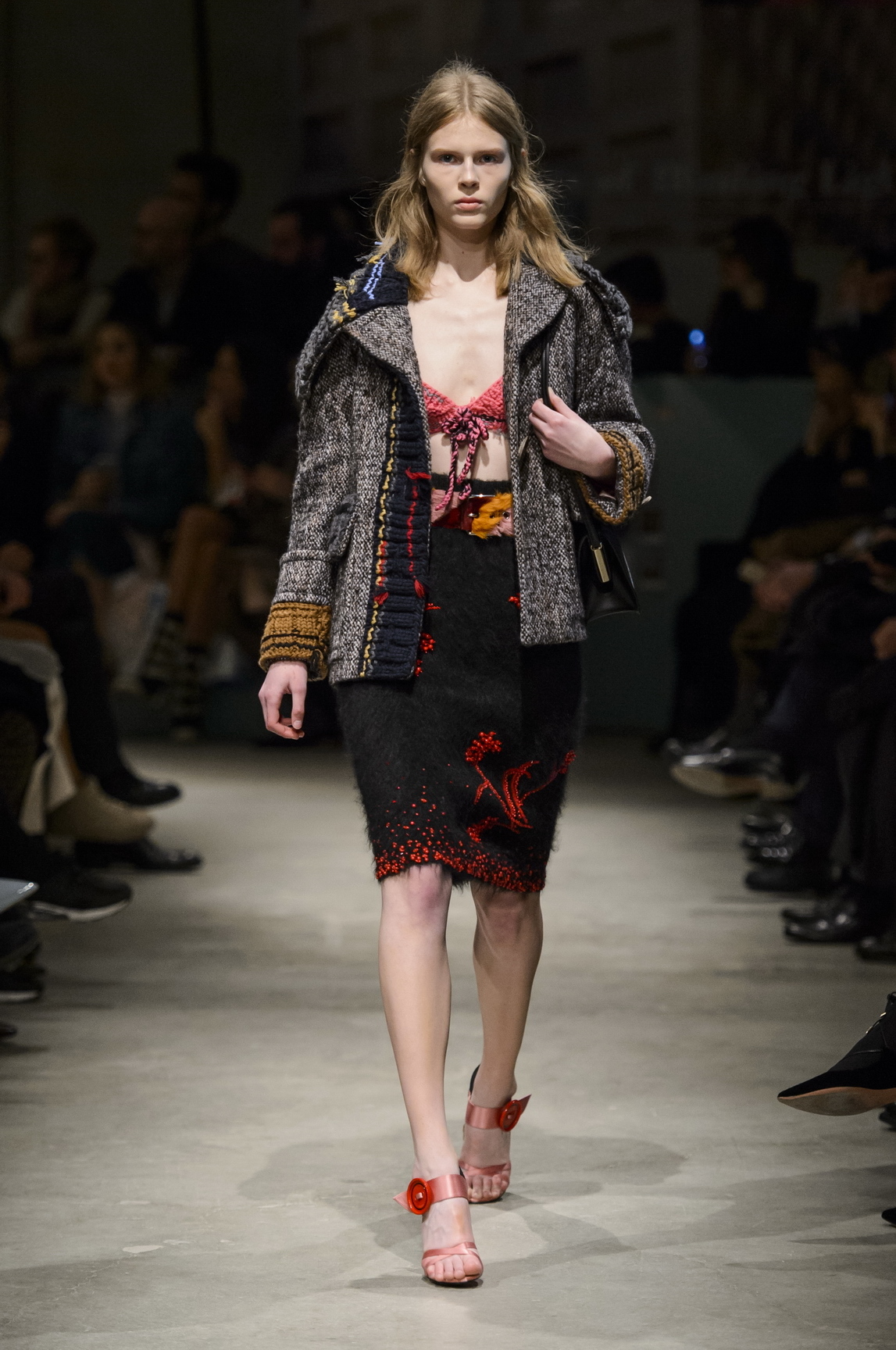
In a time when that shouldn’t even be a question, Prada had a point. It was reflected during the American election in endless media comments on Hillary Clinton and Melania Trump relating to their gender and looks, and in England Teresa May’s wardrobe and figure are ongoing fixations in the press. “It was an argument that was never really discussed. We should discuss it more,” the designer asserted. Her answer to the predicament was the overriding self-expression of her collection, as if to say that if someone says you can’t be smart and pretty at the same time, be smarter and prettier at the same time—louder, bigger, better.

Put on that enormous hairy hat, throw some fur on your flouncy skirt, cover your garments in prints and patterns and embellishment. “They had to embrace the world but without being too political,” Prada said of her fall/winter 17 women, “because I never want to be political in my job.” With the amount of retro feminist banners covering the walls of her runway space that ship might have sailed, and hallelujah! If any designer should comment on politics and feminism, by all means, let it be Mrs. Prada, wardrobe purveyor to the women of fashion through decades.
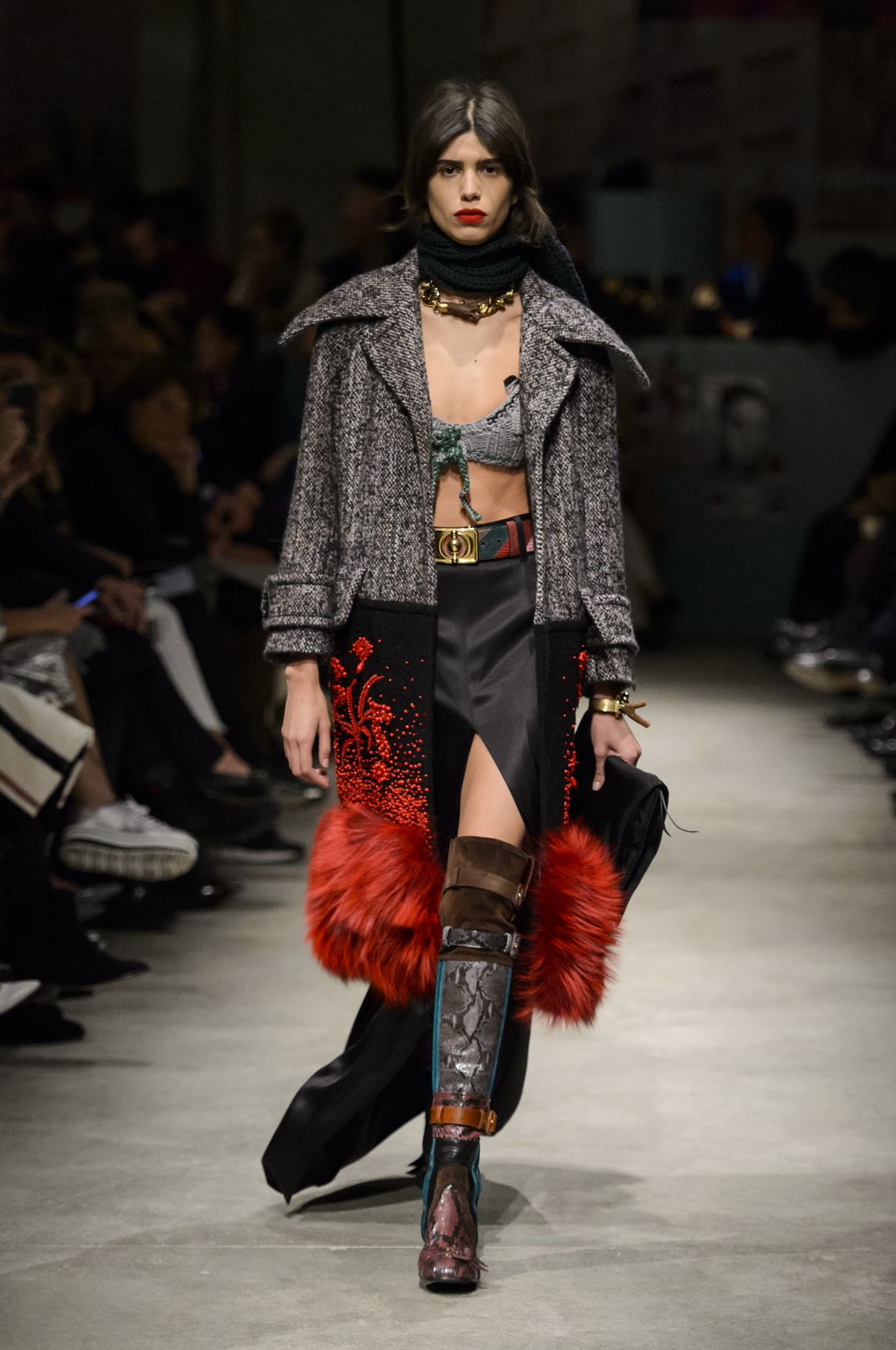
On that note, by the way, her City of Women reference had one major contrast to this industry. Because if the film’s protagonist gets an unwelcoming reception by his feminist hostesses in the city, that scenario couldn’t be further from what it feels like to be a boy around the magnificent women of fashion. One of them is Silvia Venturini Fendi, who had a feminist upbringing thanks the female-driven fashion dynasty into which she was born, and reflects it innately in everything she does.
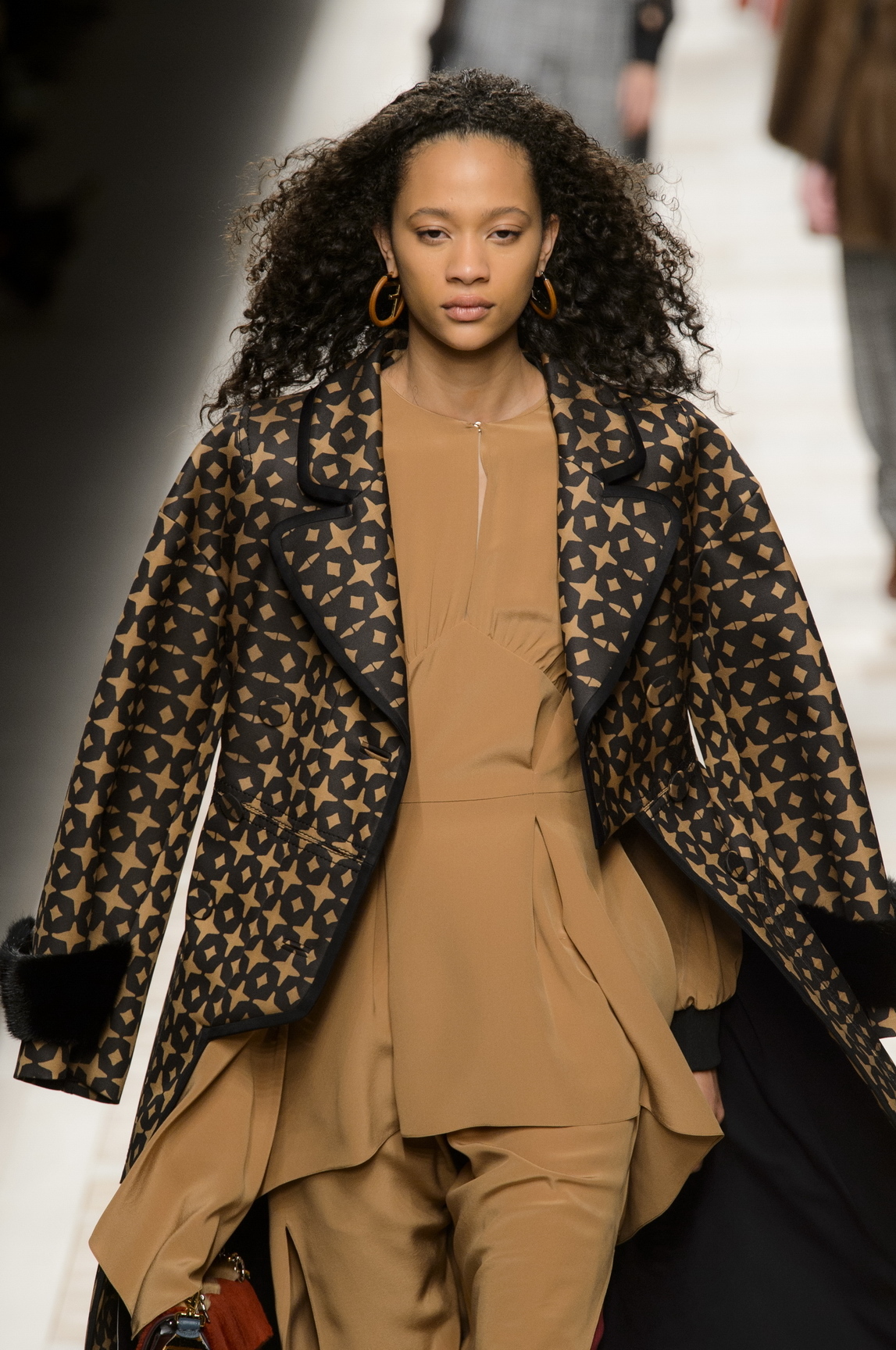
“I’m not really the kind of person to represent the female kind of fashion addicts, because I’ve always been wearing more men’s clothes than feminine clothes,” she quipped to me in an interview last year. That sentiment echoed through her runway room when the designer, who is in charge of women’s accessories and menswear at the house, took her bow with Karl Lagerfeld, who designs the womenswear, on Thursday afternoon after their fall/winter 17 show. The collection had all the handsome tailoring and mischievous female sass of Mrs Fendi’s own wardrobe and character, rooted in a power and exuberance similar to what Mrs. Prada presented later in the day.
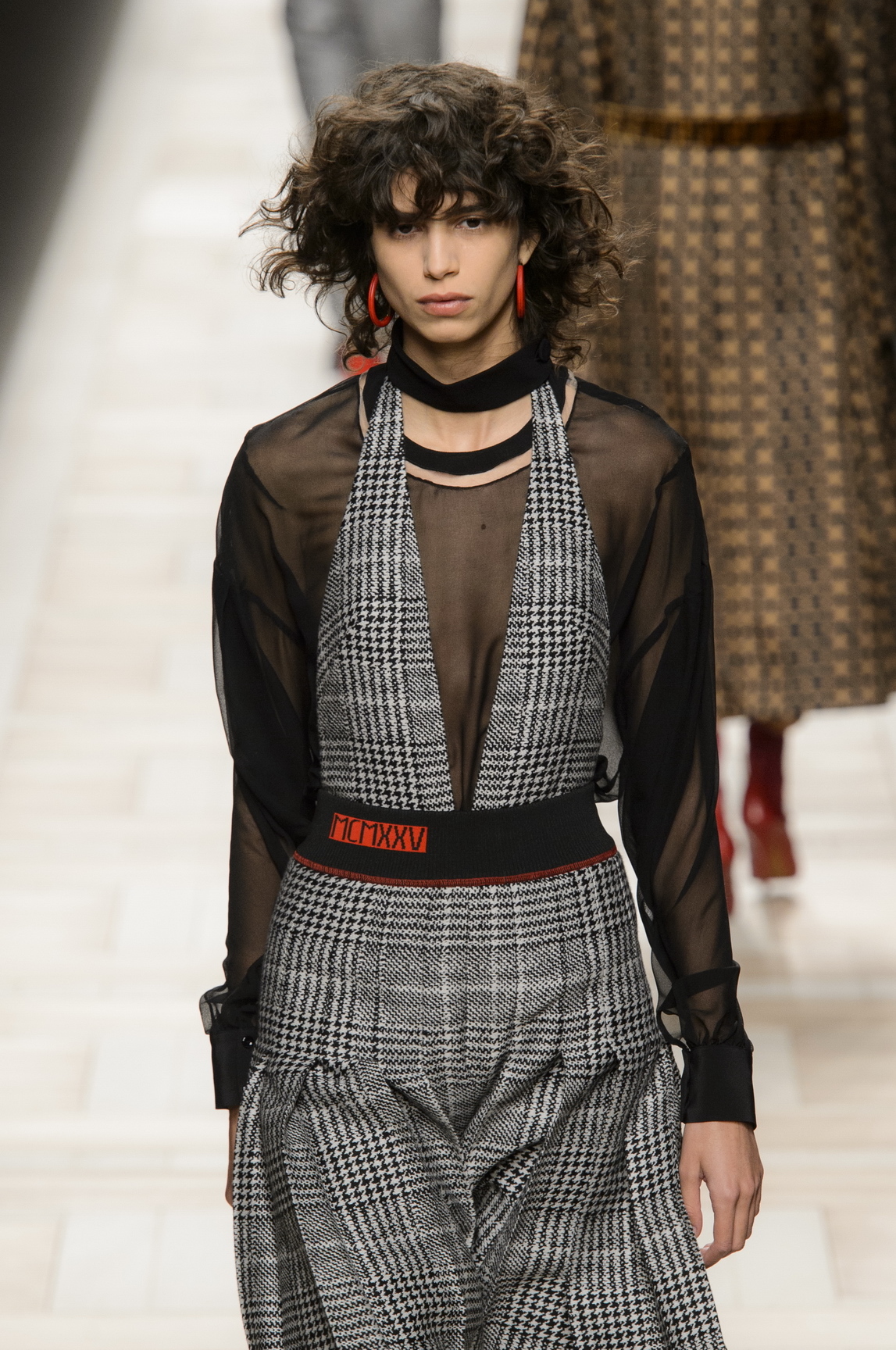
Boxy check trousers were sometimes replaced by thigh-high red leather boots in a constant conversation about femininity, power, and sex appeal. Is a woman in one of the transparent dresses that closed the Fendi show any less authoritative than a woman in the rigid grey coat that opened it, or the mad blue fur that appeared mid-collection? Hardly. The Fendi collection was the perfect balance between everything. It was every woman, and it was awesome.
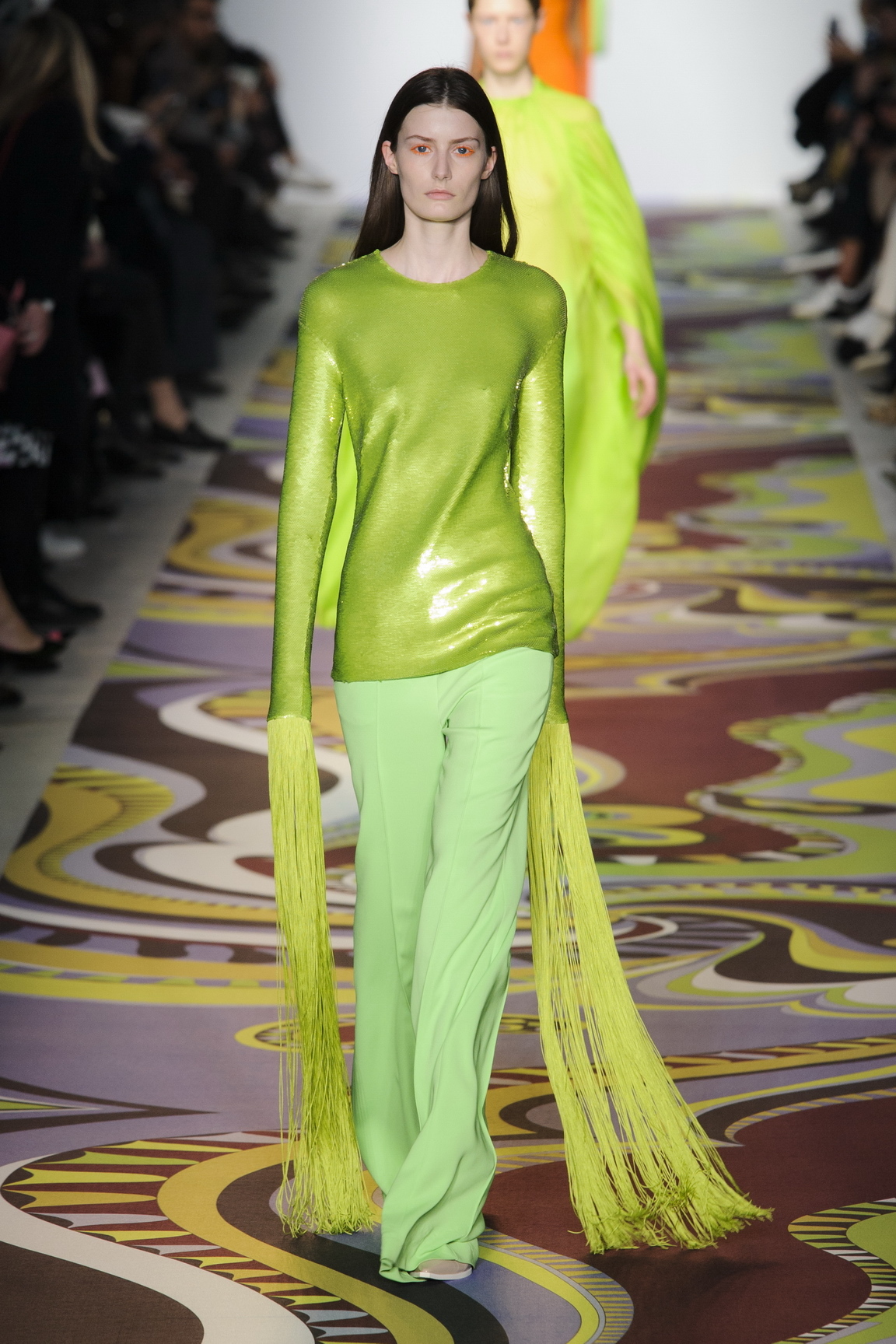
Lotta Volkova is the Russian stylist behind Vetements and Balenciaga, whose penchant for a strong shoulder and an elongated sleeve hasn’t gone unnoticed in fashion over the past two years where even brands she doesn’t consult on have acquired a taste for the oversized tailoring and structured 80s dresses she favors. Volkova’s unmistakable fingerprint was evident at Mulberry last Sunday (which she did style) and on the Thursday of shows in Milan at her newest gig, Emilio Pucci, where the stylist collaborated with designer Massimo Giorgetti.

How does one know? Well, apart from giving Pucci’s power prints and scarf dresses the supersized Volkova treatment — with much success — she posted a thank-you note for Laudomia Pucci on her Instagram along with a huge bouquet of flowers after the show. You wouldn’t think it would work, but Volkova’s trademark silhouette combined with new Pucci prints by Giorgetti and the designer’s eclectic and electric approach to the Pucci archives brought a certain temperament to the table. It worked best when said silhouette was contained — after all, the prints do the talking — but Pucci’s new sense of sexy masculinity really suited the house.
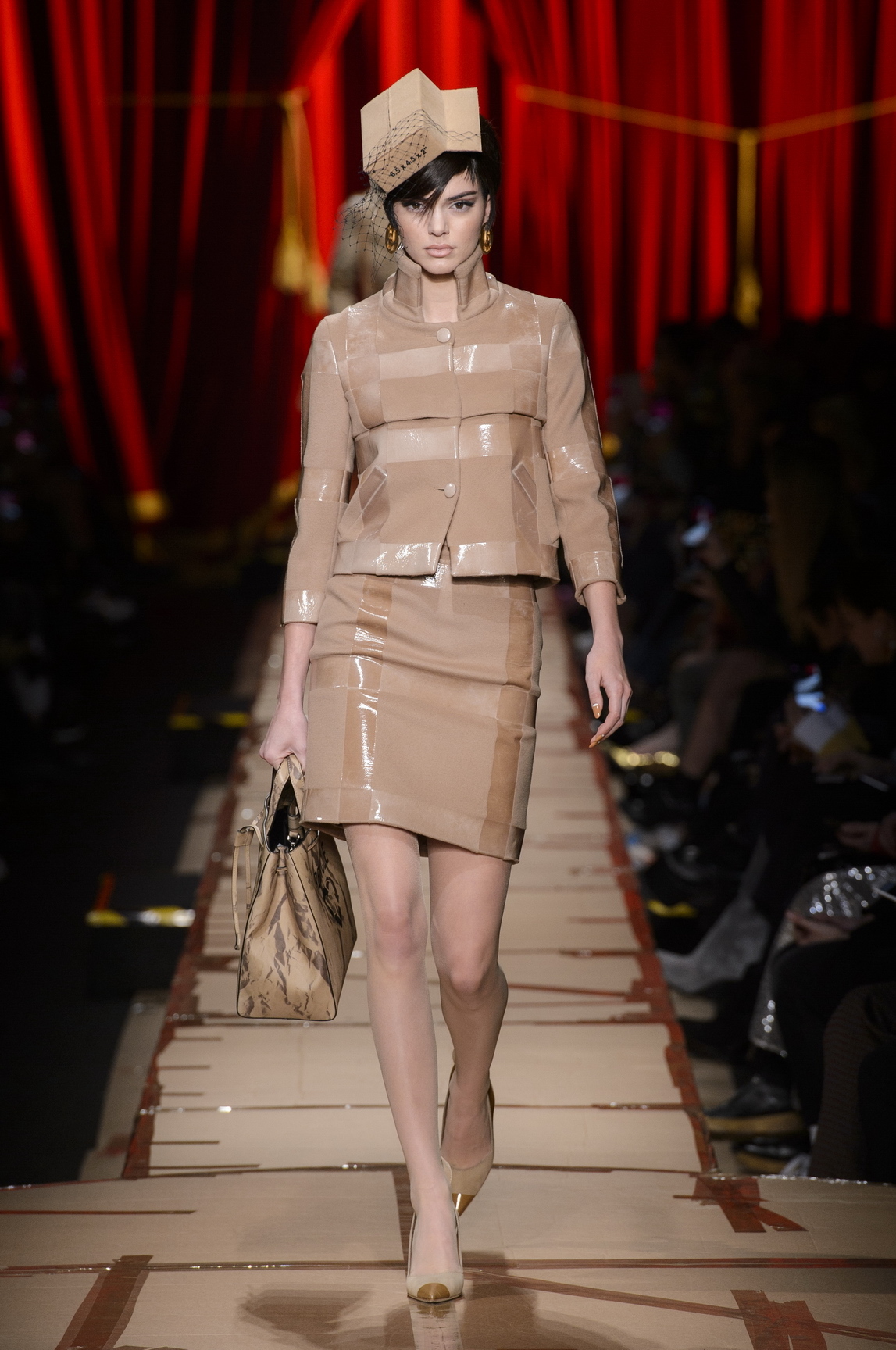
No one celebrates female expression quite like Jeremy Scott, and his Moschino shows provide fabulous nostalgia for a fashion era when supermodels really worked it on the catwalk. Walking in her mother’s footsteps, Anna Cleveland — daughter of Pat Cleveland — took it to the next level on Thursday evening, coming out in a dress made out of the same fabric as the red velvet curtain she appeared from. Pulling her train out of the curtain with high theatrics, her stride that followed got the ovation it deserved.
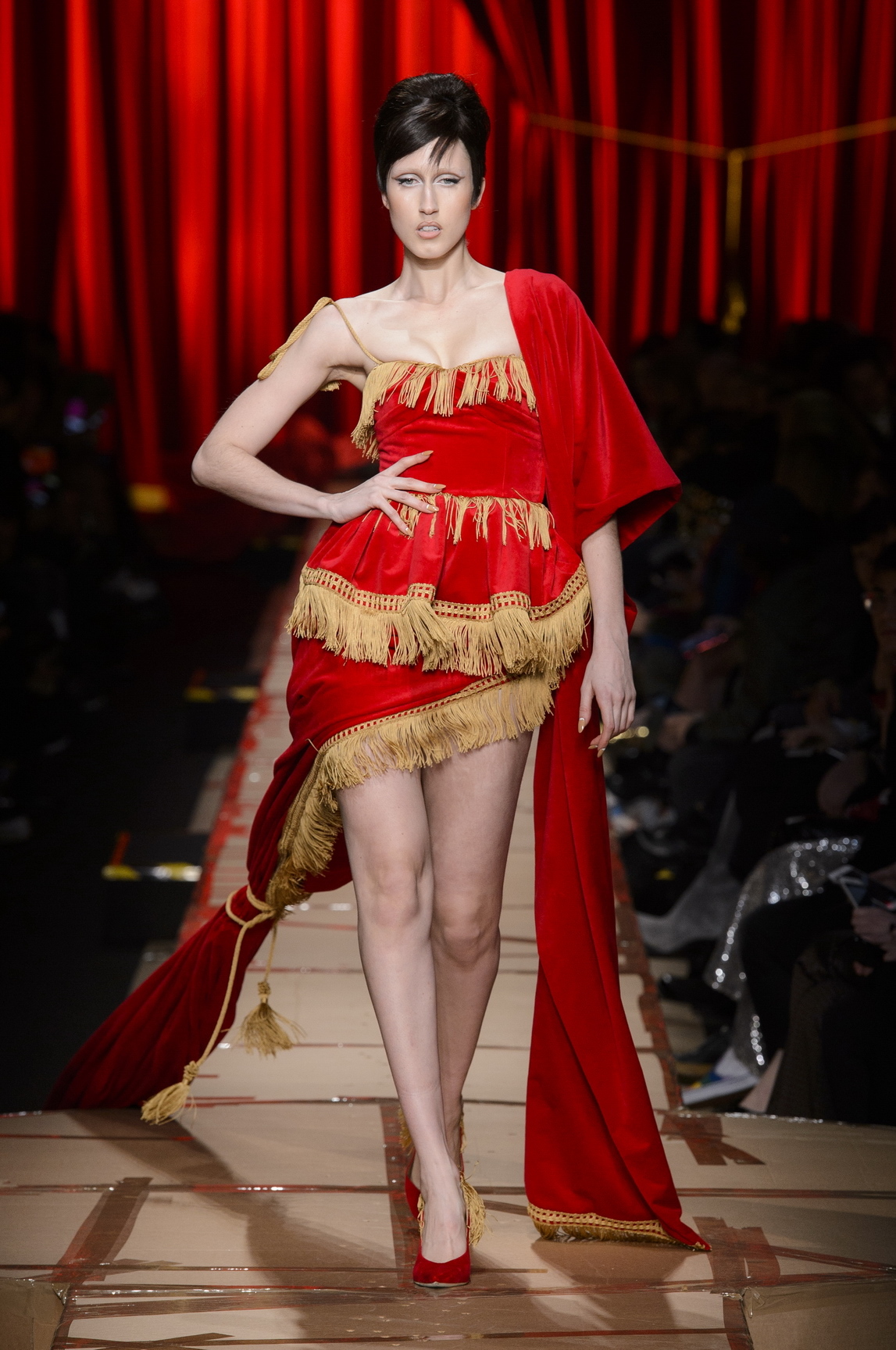
Scott’s collection was based on recycling, a theme expressed in dresses made to look like cardboard boxes and shower curtains and the likes. It was an important comment on a wasteful industry in dire need of sustainability, but modeled on those incredible women — Anna, Gigi, Bella, Kendall, Yasmin — Moschino’s evening show also rung out a day of female power on the most fabulous note fashion could have wished for.
Credits
Text Anders Christian Madsen
Photography Mitchell Sams
